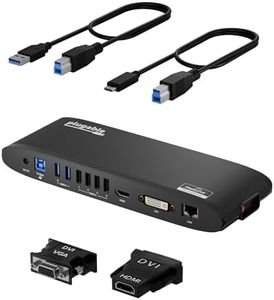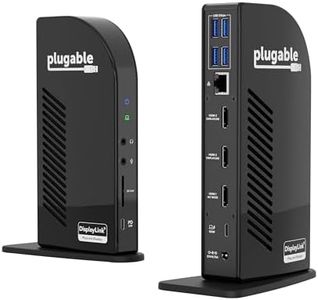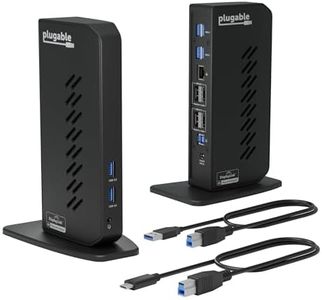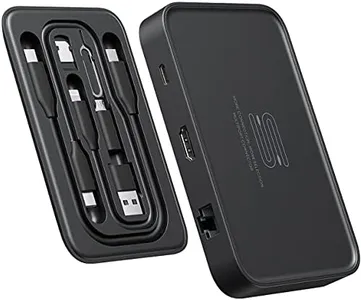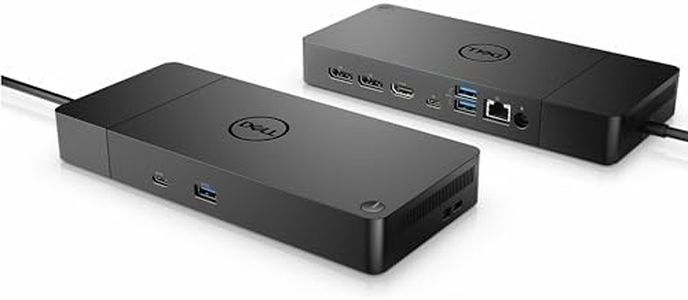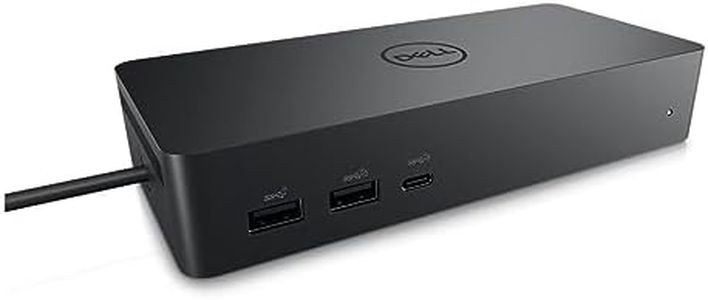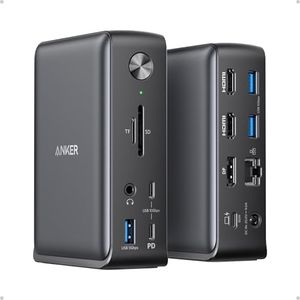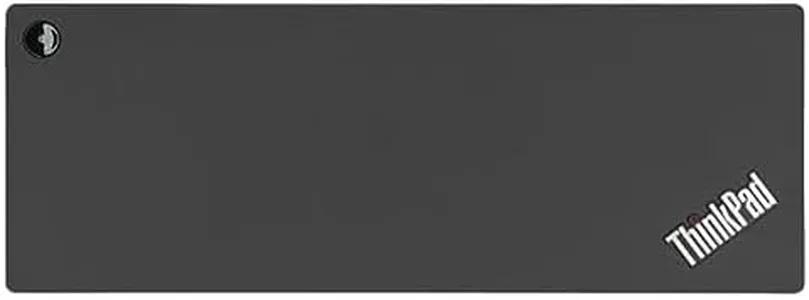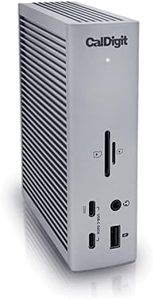10 Best USB-C Docking Stations 2025 in the United States
Our technology thoroughly searches through the online shopping world, reviewing hundreds of sites. We then process and analyze this information, updating in real-time to bring you the latest top-rated products. This way, you always get the best and most current options available.

Our Top Picks
Winner
HP USB-C Dock G5-11-in-1 Adapter for Both USB-C and Thunderbolt-Enabled Laptops, PCs, & Notebooks - Single Cable for Charging, Networking, or Data Transfers - Great for Secure & Remote Management
Most important from
785 reviews
The HP USB-C Dock G5-11-in-1 Adapter is designed to offer broad compatibility, working seamlessly with both HP and non-HP USB-C and Thunderbolt-enabled devices. This makes it a versatile choice for users with varied hardware setups.
It boasts an impressive selection of ports, including 12 ports with HDMI, DisplayPort, USB Type C, and USB 3.0 interfaces, ensuring you can connect multiple devices simultaneously. The single-cable solution simplifies connectivity by allowing you to charge your laptop and connect up to three displays, reducing desk clutter significantly. However, it only delivers 45 watts of power, which might be insufficient for power-hungry laptops and devices.
The compact, 5 x 5-inch footprint is ideal for anyone looking to save desk space without sacrificing functionality. The build quality appears solid, and the dock supports advanced network management features, making it suitable for secure and remote management. One potential drawback is the relatively high weight of 1.65 pounds, which might not be ideal for frequent travelers. Additionally, the data transfer speed relies on USB 3.0, which is fast but not the latest USB standard available. This docking station is great for users who need a reliable, multi-port solution for both work and home setups across various operating systems like Chrome OS, Windows, MacOS, and Linux.
Most important from
785 reviews
Anker Prime Docking Station, 14-Port with 160W Max Output, 10Gbps Fast Data Transfer, Real-Time Smart Interface, Audio and Ethernet Ports, Dual 4K Displays for Dell, HP, Lenovo and More
Most important from
229 reviews
The Anker Prime Docking Station offers an impressive range of connectivity options with its 14-in-1 port selection, making it ideal for users who need to connect multiple devices simultaneously. The docking station provides a robust power delivery system with a total output of 160W, allowing you to charge up to four devices at once, which is particularly beneficial for those who use multiple gadgets daily.
The data transfer speed is notably fast, up to 10Gbps, ensuring quick and efficient management of files and data across different devices. Display support includes dual HDMI ports, enabling dual 4K displays, although there are limitations for macOS users as the external monitors will display identical content. Additionally, it's important to note that the docking station does not support 5120*1440 monitors, which might be a drawback for users with high-resolution display requirements.
The build quality and design are sleek and durable, characteristic of Anker products, making it a reliable choice for everyday use. Compatibility is wide-ranging, supporting USB-C, USB4, and Thunderbolt connections, and is suitable for Windows, ChromeOS, and certain macOS devices. However, it is not compatible with Linux systems, which could be a deal-breaker for Linux users. This docking station is an excellent choice for users looking for versatile port selection, strong power delivery, high-speed data transfer, and reliable build quality, provided they do not require Linux compatibility or high-resolution monitor support.
Most important from
229 reviews
Buying Guide for the Best USB-C Docking Stations
When choosing a USB-C docking station, it's important to consider your specific needs and how you plan to use the device. A docking station can greatly enhance your productivity by expanding the connectivity options of your laptop or other USB-C enabled devices. To make the best choice, you should understand the key specifications and how they align with your requirements.FAQ
Most Popular Categories Right Now
